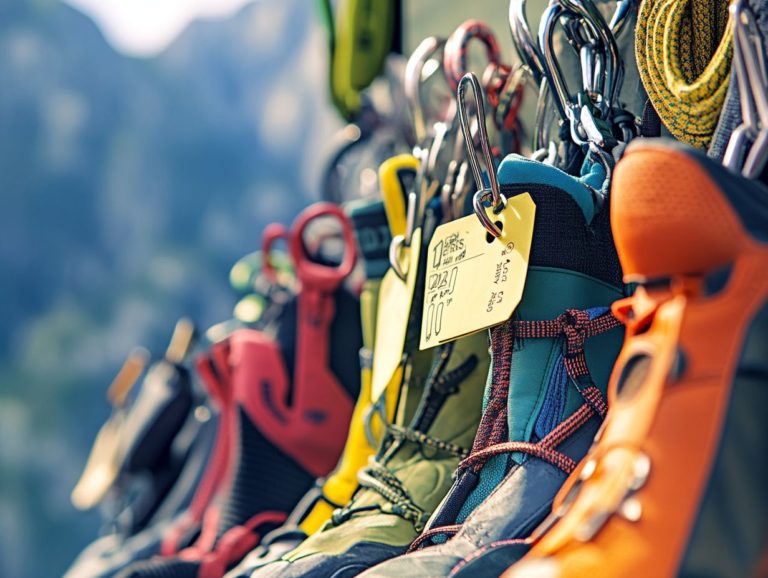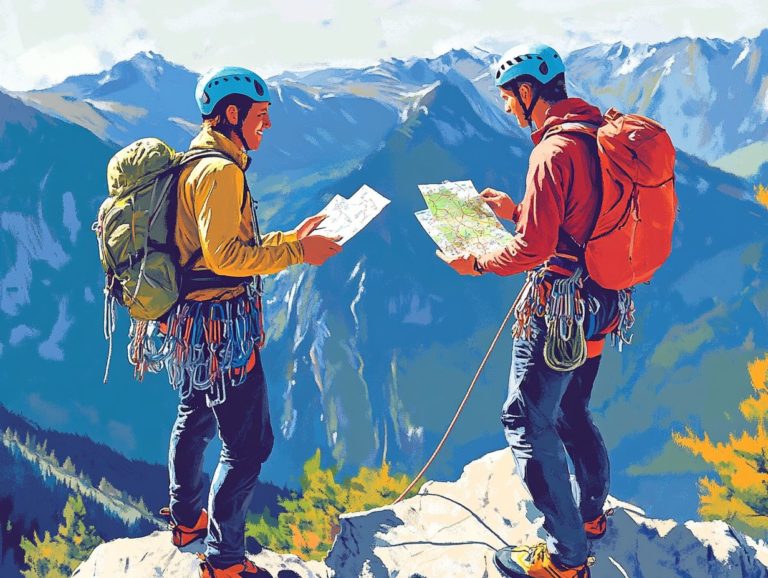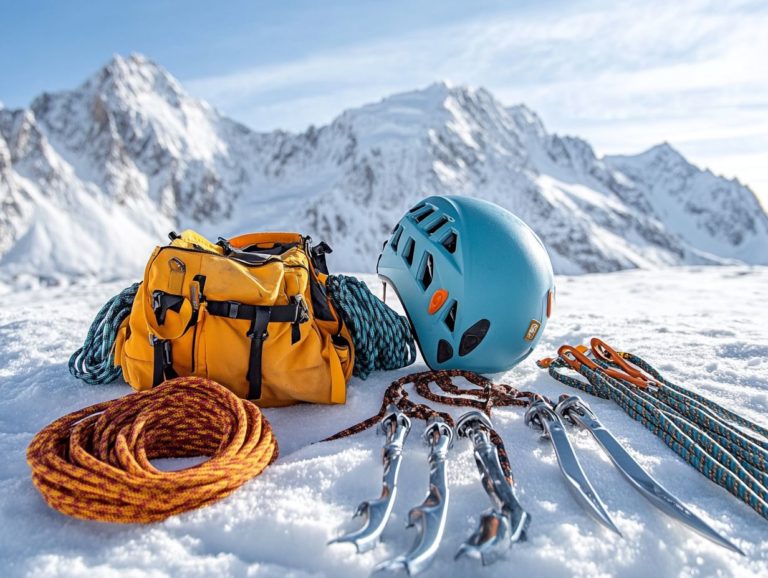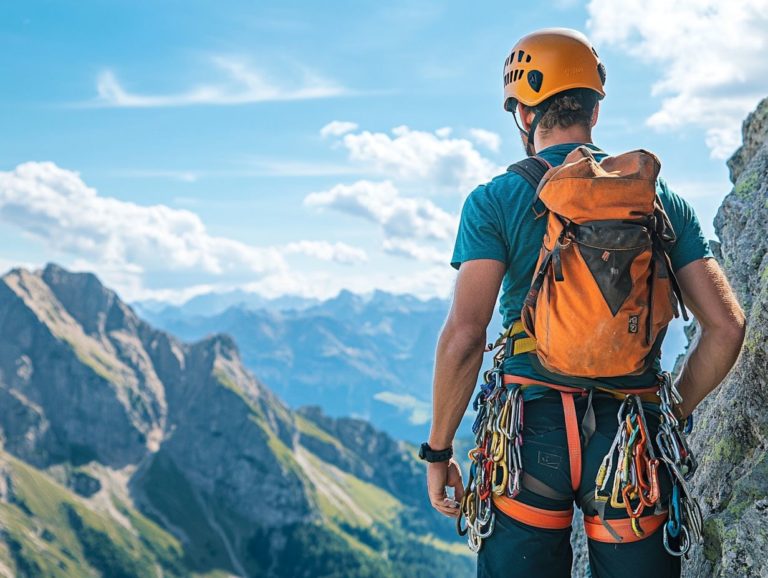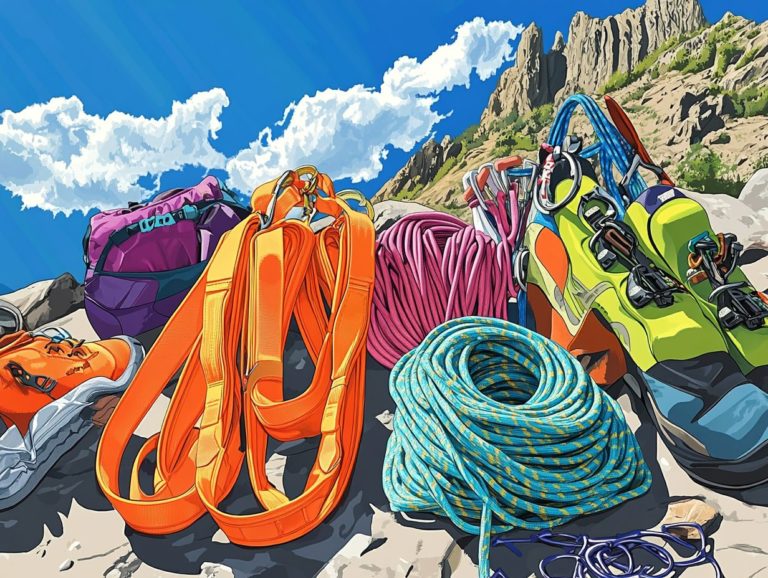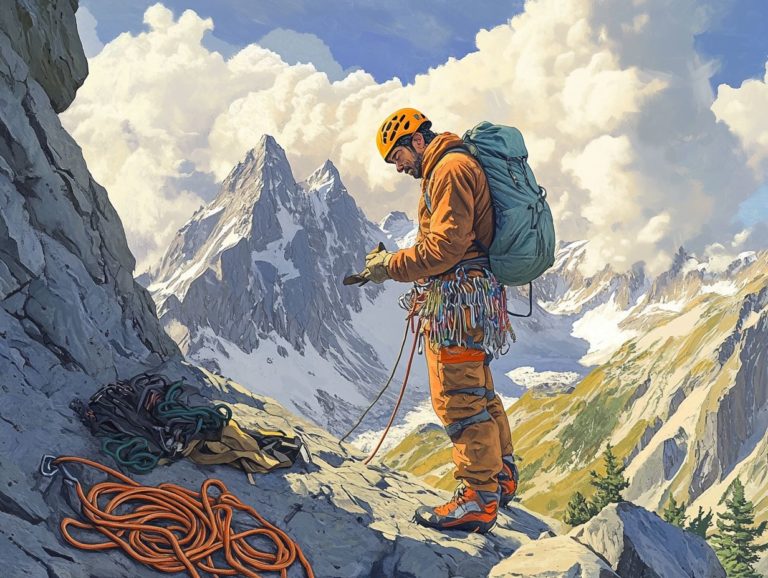How to Choose Climbing Gear for Rock Climbing
Choosing the right climbing gear is crucial for ensuring both your safety and performance as you embark on your rock climbing adventures.
From selecting the ideal climbing shoes that enhance your grip to understanding the different types of harnesses and their specific applications, each piece of equipment is vital for your success on the rock.
This guide will walk you through the key factors for selecting the best gear, including climbing ropes, helmets, and more. It will also provide tips for maintaining your equipment to ensure its longevity.
Get ready to gear up and take your climbing adventures to the next level!
Contents
- Key Takeaways:
- Overview of Essential Gear
- Choosing the Right Climbing Shoes
- Picking the Perfect Harness
- Types of Harnesses and Their Uses
- Selecting the Right Rope
- Understanding Rope Characteristics
- Other Gear to Consider
- Helmets, Chalk Bags, and More
- Proper Maintenance and Care for Climbing Gear
- Frequently Asked Questions
- What types of climbing gear are essential for rock climbing?
- How should I choose the right climbing harness for rock climbing?
- What should I consider when selecting climbing shoes?
- How do I know what type of climbing ropes to use?
- What should I look for in a climbing helmet?
- How many carabiners do I need for rock climbing?
Key Takeaways:
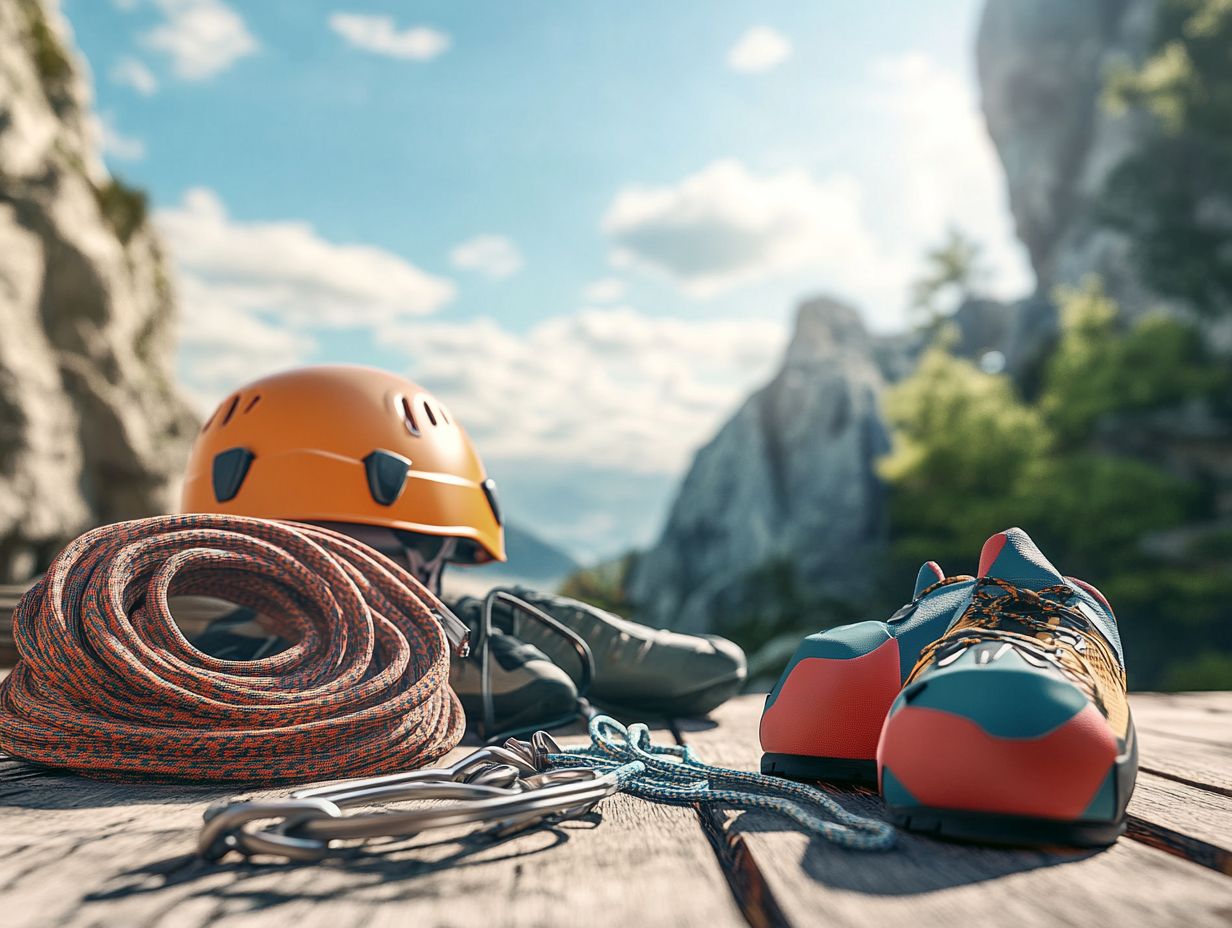
- Choose climbing shoes based on the type of climbing you will be doing, the fit and comfort, and the type of sole for optimal grip and support.
- Consider the type of climbing styles and your body type when selecting a harness, and be sure to regularly check for wear and tear to ensure safety.
- When selecting a climbing rope, pay attention to its diameter, length, and material, and always properly care for and inspect it before each use.
Overview of Essential Gear
Grasping the essential gear needed for rock climbing is important for both newcomers and seasoned climbers. The right climbing gear like climbing shoes, a robust harness, and a dependable belay device can greatly elevate your performance while ensuring your safety across diverse routes and environments.
Investing in UIAA-certified climbing ropes is essential for safety. This certification means the gear meets specific safety standards, enhancing your climbing experience and minimizing risks. Additionally, learning how to organize your climbing gear can further improve your performance and help you connect with fellow climbers.
Choosing the Right Climbing Shoes
Selecting the ideal climbing shoes is essential for enhancing your climbing performance and overall enjoyment. The right footwear significantly influences your ability to grip holds and ensures precision across a range of climbing routes.
With various shapes, sizes, and materials available, climbing shoes are carefully made for different climbing styles, whether you’re bouldering or tackling sport climbing. To enhance your experience, check out the top climbing gear for rock climbers.
Factors to Consider
When selecting climbing shoes, several factors can significantly impact your climbing performance, including fit, material, and the specific styles of climbing you intend to pursue. A snug fit is crucial for optimal performance, allowing you to effectively leverage your climbing techniques across various environments.
For maximum efficiency, it’s important to pay close attention to the shoe’s overall construction and fabric composition. Different materials, whether synthetic fabrics or natural leather, can greatly influence breathability, durability, and stretch, all of which directly affect your comfort and performance during extended climbs.
The type of climbing you choose, be it bouldering, sport climbing, or trad, will also guide your shoe design selection, including features like stiffness and rubber traction. By understanding these critical factors, you can choose footwear that enhances your skills and supports your specific climbing goals, as well as learn how to maintain your climbing gear effectively.
Picking the Perfect Harness
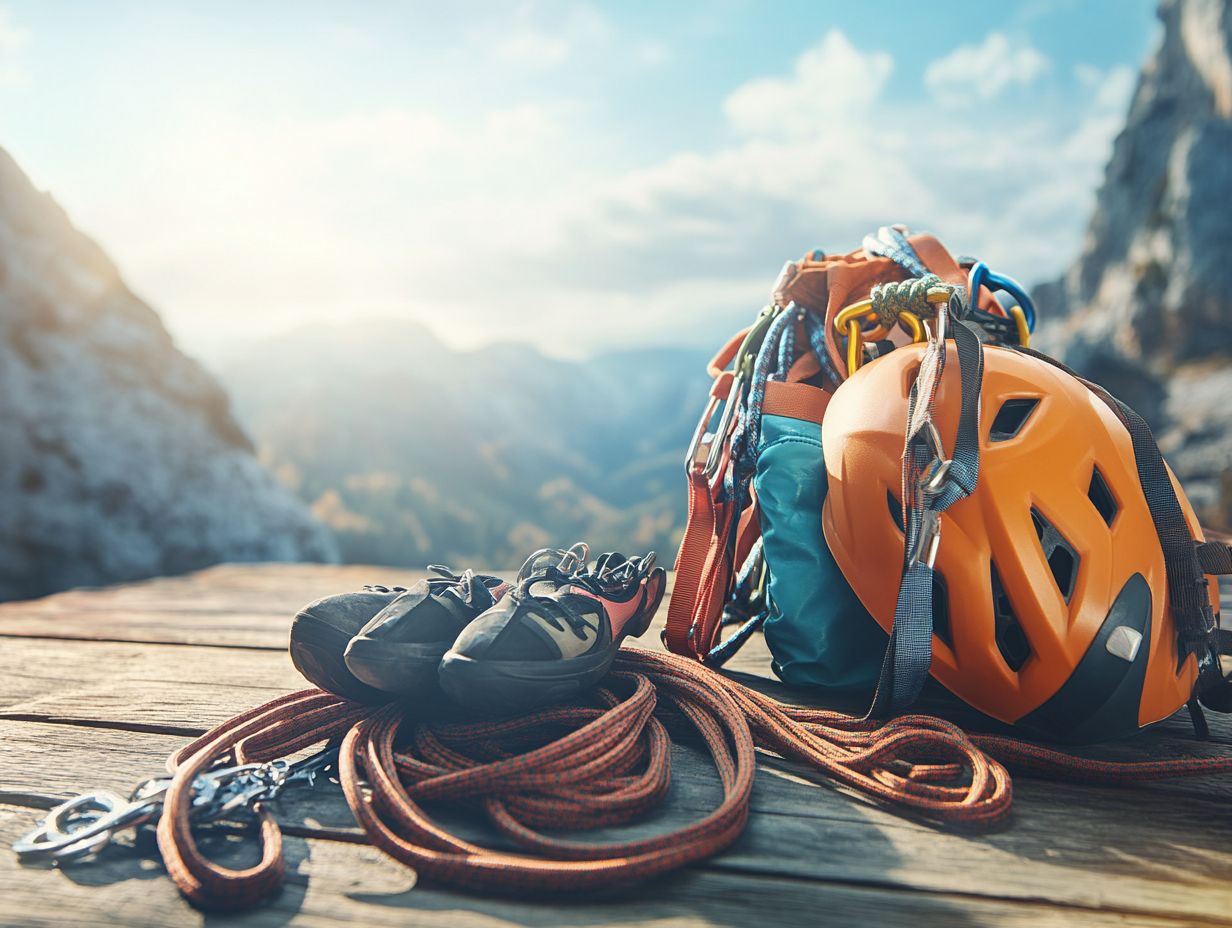
Choosing the right climbing harness is essential for your safety and can significantly enhance your climbing experience, whether you re sport climbing, trad climbing, or bouldering.
A properly fitted harness not only supports your weight but also facilitates efficient movement as you collaborate with climbing partners on diverse routes, especially when using the best climbing gear for multi-pitch routes.
Types of Harnesses and Their Uses
Understanding the various types of climbing harnesses and their specific uses is essential for you as a climber. Each harness boasts unique features tailored to different climbing styles, whether you re into sport climbing or trad climbing. Choosing the right harness will elevate your comfort, safety, and overall climbing efficiency.
Depending on your activity, you might opt for designs like full-body harnesses if you’re a beginner or tackling rescue scenarios. Experienced climbers often prefer streamlined seat harnesses for multi-pitch routes. Each design has its perks; for instance, a well-padded harness can make those extended hangs much more comfortable, while a lightweight option can help you move more freely on ascents. It’s also crucial to understand the role of gear in climbing safety to enhance your overall climbing experience.
Safety features, such as adjustable leg loops and gear loops, are crucial. They ensure your harness fits snugly, allowing for quick access to essential gear when you need it most. By thoughtfully selecting a harness that aligns with your climbing goals, you’ll enhance both your safety and enjoyment as you scale new heights with the best climbing gear for alpine climbs.
Selecting the Right Rope
Choosing the right climbing rope is essential. It impacts your safety and climbing techniques on the rock face. The market is filled with options, including dynamic ropes, which are critical for absorbing the shock of falls and ensuring you have a secure climbing experience.
Understanding Rope Characteristics
Understanding the characteristics of climbing ropes is vital for making informed decisions about your gear. Key features include the distinction between dynamic and static ropes, the diameter of the rope, and the importance of UIAA certification. This certification ensures that the rope meets high safety standards, all of which directly influence your climbing safety and performance.
Choosing between dynamic and static ropes is a critical decision. Dynamic ropes are specifically designed to stretch under load, effectively absorbing the energy from falls. In contrast, static ropes offer minimal stretch, making them the ideal choice for rappelling and anchor systems.
The diameter of the rope also plays a significant role in handling and durability. Thinner ropes might be lighter and easier to manage, but they can compromise safety ratings.
Grasping these nuances not only enhances your climbing techniques but also reinforces your overall climbing safety. For those venturing into the sport, knowing how to choose a climbing backpack is crucial.
Other Gear to Consider
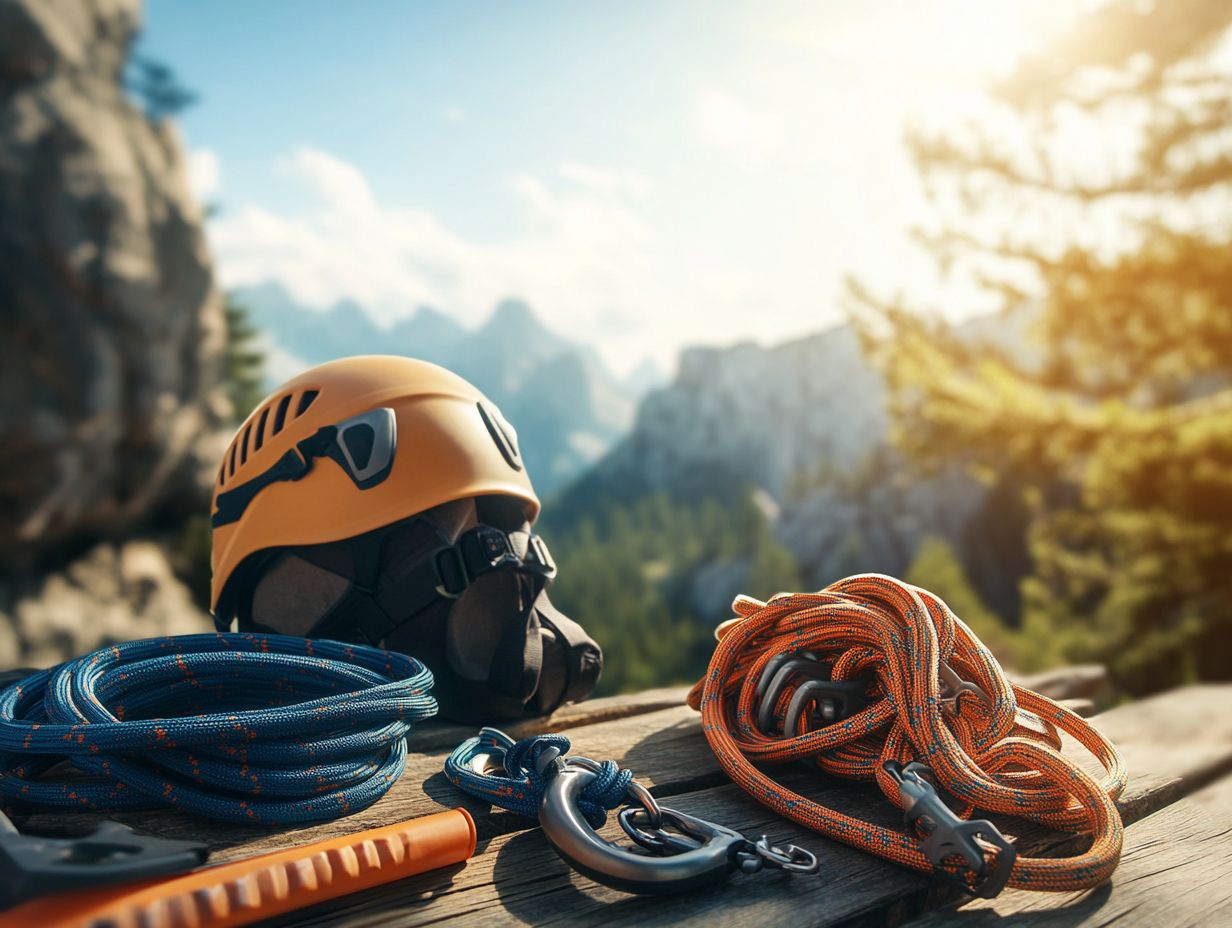
While climbing shoes, harnesses, and ropes are undeniably essential, don t overlook the importance of other vital equipment like helmets and chalk bags. These items significantly bolster your climbing safety and elevate your overall experience.
Each piece of gear is crucial in enhancing your performance and reducing risks, ensuring that your time spent scaling heights is both exhilarating and secure. To achieve this, understanding how to pack your climbing gear efficiently reflects the importance of climbing habits.
Helmets, Chalk Bags, and More
Essential climbing gear, like helmets and chalk bags, adds crucial layers of protection and performance enhancement, no matter the climbing conditions. Helmets shield you from falling debris, while chalk bags help you maintain a better grip and manage moisture effectively.
The importance of these tools is immense, as they directly contribute to your climbing safety and efficiency. Helmets are designed to absorb impacts from potential falls and collisions, featuring adjustable straps and ventilation for your comfort. On the flip side, chalk bags are vital for keeping your hands dry, ensuring that you can grasp holds securely. This not only enhances your climbing technique but also minimizes the risk of slipping. Having the right equipment, such as the essential gear for indoor climbing, is crucial for a successful experience.
Together, they exemplify how thoughtful climbing practices and the right equipment, including knowing how to choose the right climbing harness, can protect you while maximizing your performance across various terrains.
Proper Maintenance and Care for Climbing Gear
Proper maintenance and care for your climbing gear are essential for ensuring both longevity and safety. By conducting regular inspections and establishing a systematic gear care routine, you can significantly reduce risks while also extending the lifespan of your equipment.
This attention to detail boosts your gear s reliability and keeps you safer on your climbs!
Tips for Extending the Lifespan of Your Gear
Extend the lifespan of your climbing gear! Taking care of your gear is essential for your safety and adventures. Regularly inspect your equipment for wear, clean it properly, and store it in suitable conditions to make a substantial difference.
A well-structured maintenance routine offers many benefits. It helps you spot potential issues before they become serious hazards. After every use, make it a habit to check your ropes for frays or cuts. Inspect your harness for any signs of degradation in stitching or buckles.
After a day of adventure, cleaning your gear is a must! It keeps your equipment in great shape. Clean your gear after exposure to dirt, saltwater, or harsh conditions with a gentle wash of mild soap and warm water. Store your gear in a cool, dry place, out of direct sunlight to enhance its durability. This way, you can have confidence in your gear for countless adventures ahead.
Frequently Asked Questions
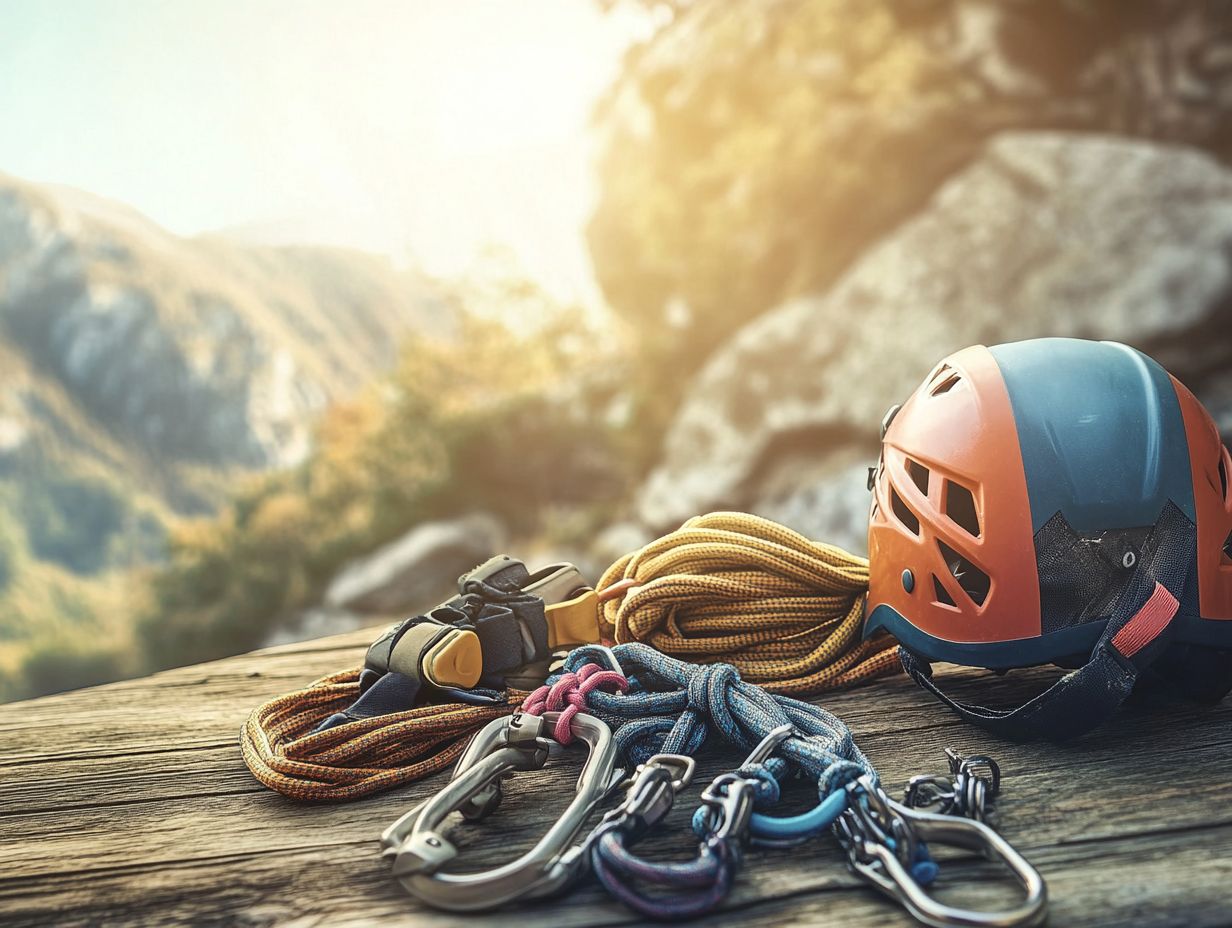
What types of climbing gear are essential for rock climbing?
The most essential climbing gear for rock climbing includes a harness, climbing shoes, a climbing rope, a helmet, and carabiners. These items are necessary for safety and help you navigate the rock face.
How should I choose the right climbing harness for rock climbing?
When choosing a harness, make sure it fits comfortably and has adjustable leg loops. Look for a harness with gear loops and a belay loop for attaching equipment and ropes. Always check for any wear or damage before each use.
What should I consider when selecting climbing shoes?
Choosing the right climbing shoes is crucial for a successful climb. Look for shoes that fit snugly but not too tight, have sticky rubber soles for better grip, and are designed specifically for your climbing style.
How do I know what type of climbing ropes to use?
The type of climbing rope you need depends on your climbing style. Dynamic ropes are best for lead climbing, while static ropes suit top roping. Choose a rope appropriate for your weight and the length of your climb.
What should I look for in a climbing helmet?
When selecting a climbing helmet, ensure it fits comfortably and has proper ventilation. Choose a helmet designed specifically for rock climbing with a durable outer shell. Regularly replace your helmet if it becomes damaged.
How many carabiners do I need for rock climbing?
The number of carabiners you need will depend on the type of climbing you’ll be doing. It’s wise to have extra carabiners on hand for attaching equipment and creating anchor points. Always check your carabiners for wear and damage.
Review your gear and take action on what you ve learned. Ensure you are prepared for your next climbing adventure!

